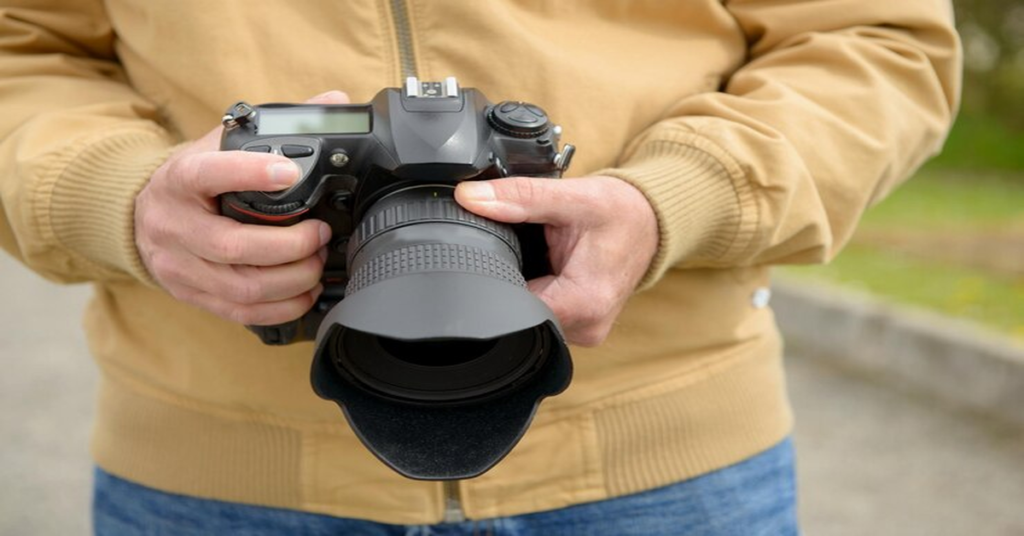In a world dominated by smartphone photography and high-end mirrorless cameras, the humble point and shoot camera still holds a significant and valuable place. Whether you’re a casual traveler, an aspiring content creator, or someone who simply wants to capture everyday moments with ease, the best point and shoot camera can be the perfect balance of convenience and image quality.
This guide provides a comprehensive look at what makes a point and shoot camera worth considering in 2024. From understanding their unique features and comparing top models to exploring use cases and offering buying tips, this article is your go-to resource for choosing the right compact camera.
What Is a Point and Shoot Camera?
Definition and Overview
A point and shoot camera, also known as a compact camera, is a digital camera designed primarily for simple operation. Unlike DSLRs or mirrorless systems that require manual adjustments and interchangeable lenses, point and shoot cameras typically have:
- A fixed lens
- Automatic settings
- A compact, lightweight body
They’re ideal for users who prioritize ease-of-use and portability without compromising too much on image quality.
Key Characteristics
- Compact design: Small enough to fit in a pocket or small bag
- Integrated lens: Usually with zoom capabilities
- Auto mode: Great for beginners
- Decent image sensors: Better quality than most smartphones
- Quick startup: Turn on and shoot in seconds
Benefits of Using a Point and Shoot Camera
Portability
Point and shoot cameras are significantly lighter and more portable than DSLRs and mirrorless setups, making them perfect for travel and casual photography.
Simplicity
With automatic settings and intuitive controls, these cameras eliminate the learning curve, making them accessible to all.
Better Optical Zoom
Most compact cameras offer optical zoom, which outperforms digital zoom on smartphones in terms of clarity and detail.
Improved Image Quality
Although not quite at the level of full-frame sensors, point and shoot cameras often outperform smartphones, particularly in low-light conditions.
Affordability
While high-end models exist, many excellent point and shoot cameras are budget-friendly.
Top Features to Look For
Sensor Size
- 1-inch sensors: Offer significantly better image quality and low-light performance.
- Smaller sensors: Found in ultra-compact models, suitable for casual use.
Lens Quality
- Wide aperture (e.g., f/1.8): Allows better low-light shots and background blur.
- Optical zoom range: Look for 3x to 30x depending on your needs.
Image Stabilization
Optical or digital stabilization helps reduce blur in handheld shots.
Autofocus Speed
Quick and accurate autofocus ensures you never miss a moment.
Connectivity Options
Wi-Fi, Bluetooth, and NFC allow easy image transfer to smartphones and other devices.
Video Capabilities
If you plan to shoot video, look for:
- 4K resolution
- Optical stabilization
- Microphone input (if available)
Best Point and Shoot Cameras in 2024
1. Sony RX100 VII
- Sensor: 1-inch stacked CMOS
- Lens: 24-200mm f/2.8-4.5 zoom
- Video: 4K, real-time eye AF
- Pros: Excellent image quality, fast autofocus, compact
- Cons: Expensive
2. Canon PowerShot G7 X Mark III
- Sensor: 1-inch CMOS
- Lens: 24-100mm f/1.8-2.8
- Video: 4K with live streaming
- Pros: Great for vloggers, good low-light performance
- Cons: No viewfinder
3. Panasonic Lumix ZS200 / TZ200
- Sensor: 1-inch
- Lens: 24-360mm zoom
- Video: 4K
- Pros: Superb zoom range in compact form
- Cons: Slightly bulkier
4. Fujifilm X100V
- Sensor: APS-C (larger than 1-inch)
- Lens: Fixed 23mm f/2
- Video: 4K
- Pros: Excellent for street photography, retro design
- Cons: Higher learning curve, premium price
5. Ricoh GR IIIx
- Sensor: APS-C
- Lens: 40mm equivalent fixed
- Video: 1080p
- Pros: Ultra-compact, professional image quality
- Cons: No zoom
Point and Shoot vs. Smartphone Cameras
| Feature | Point and Shoot | Smartphone |
|---|---|---|
| Optical Zoom | ✓ | ✗ (usually digital only) |
| Sensor Size | Larger | Smaller |
| Manual Controls | Basic to advanced | Advanced (apps needed) |
| Portability | Very portable | Extremely portable |
| Image Quality | Generally better | Good, especially with AI |
| Cost | Mid to high | Already included in phone |
Verdict: Point and shoot cameras are still relevant for those who want superior zoom, better sensors, and dedicated photography tools.
Use Cases for Point and Shoot Cameras
Travel Photography
Perfect for vacations—lightweight with strong zoom capabilities.
Family and Everyday Moments
Capture birthdays, reunions, and daily life in better quality than your phone.
Vlogging and Content Creation
Many models offer flip screens, 4K video, and mic inputs.
Hobby Photography
For those exploring photography without jumping into complex gear.
Tips for Buying the Right Model
Define Your Needs
Ask yourself:
- Will you shoot more photos or videos?
- Is portability a top priority?
- Do you need high zoom or better low-light performance?
Budget Planning
- Entry-level: $300–$500
- Mid-range: $500–$900
- High-end: $900 and above
Try Before You Buy
Visit a store or rent a model to see how it feels in hand.
Check for Firmware and App Support
Good manufacturer support can add features post-purchase.
Read Reviews and Watch Demos
Use platforms like YouTube and photography blogs for hands-on insights.
Accessories to Enhance Your Experience
Memory Cards
- Look for UHS-I or UHS-II SD cards with at least 64GB.
Extra Batteries
Compact cameras often have small batteries. Carry spares.
Cases and Straps
Protect your gear on the go.
Tripods
Mini or travel tripods are great for stability in low-light and video.
Maintenance and Care
Cleaning
Use a soft brush and microfiber cloth to keep lenses clean.
Firmware Updates
Occasional updates can fix bugs and add new features.
Storage
Keep cameras in cool, dry environments. Avoid humidity.
Environmental Impact
Sustainable Choices
- Buy used or refurbished to reduce electronic waste.
- Recycle old gear responsibly.
Eco-Friendly Brands
Some manufacturers use recycled materials in packaging and components.
The Future of Point and Shoot Cameras
AI Integration
Expect smarter auto modes, scene recognition, and in-camera editing tools.
Improved Connectivity
Future models will feature better app integration, cloud backups, and instant sharing.
8K Video and Computational Photography
As tech evolves, even compact models will rival larger cameras in video and advanced image processing.
Conclusion
The best point and shoot camera is more than just a device—it’s a bridge between ease of use and creative freedom. Whether you’re capturing memories, creating content, or diving into photography as a hobby, there’s a compact camera out there that fits your lifestyle, budget, and aspirations.
By understanding your needs and comparing features, you can make an informed decision that rewards you with stunning images and seamless performance.
So go ahead, find the perfect point and shoot camera, and start documenting your world in vibrant, unforgettable detail.
FAQs About Best Point and Shoot Cameras
1. Are point and shoot cameras better than smartphones?
In many cases, yes. They offer better zoom, larger sensors, and often superior image quality, especially in low light.
2. What is the best point and shoot camera for travel?
The Panasonic ZS200 offers an excellent balance of portability and zoom, ideal for travel photography.
3. Can I shoot professional videos with a point and shoot camera?
Yes. Models like the Canon G7 X Mark III and Sony RX100 VII support 4K video and offer good stabilization.
4. Do point and shoot cameras need special lenses?
No. They come with built-in lenses, often with optical zoom, so you don’t need to buy extra lenses.
5. How long do point and shoot cameras last?
With proper care, they can last 5–10 years or more. Battery life varies by model.
6. Are there waterproof point and shoot cameras?
Yes. Cameras like the Olympus Tough TG-6 are designed for underwater and rugged outdoor use.







